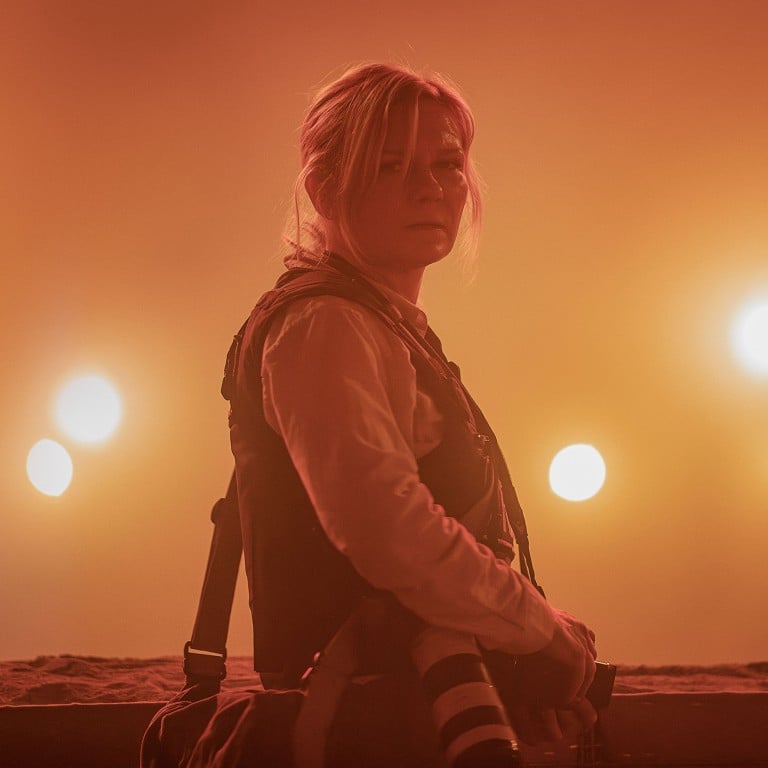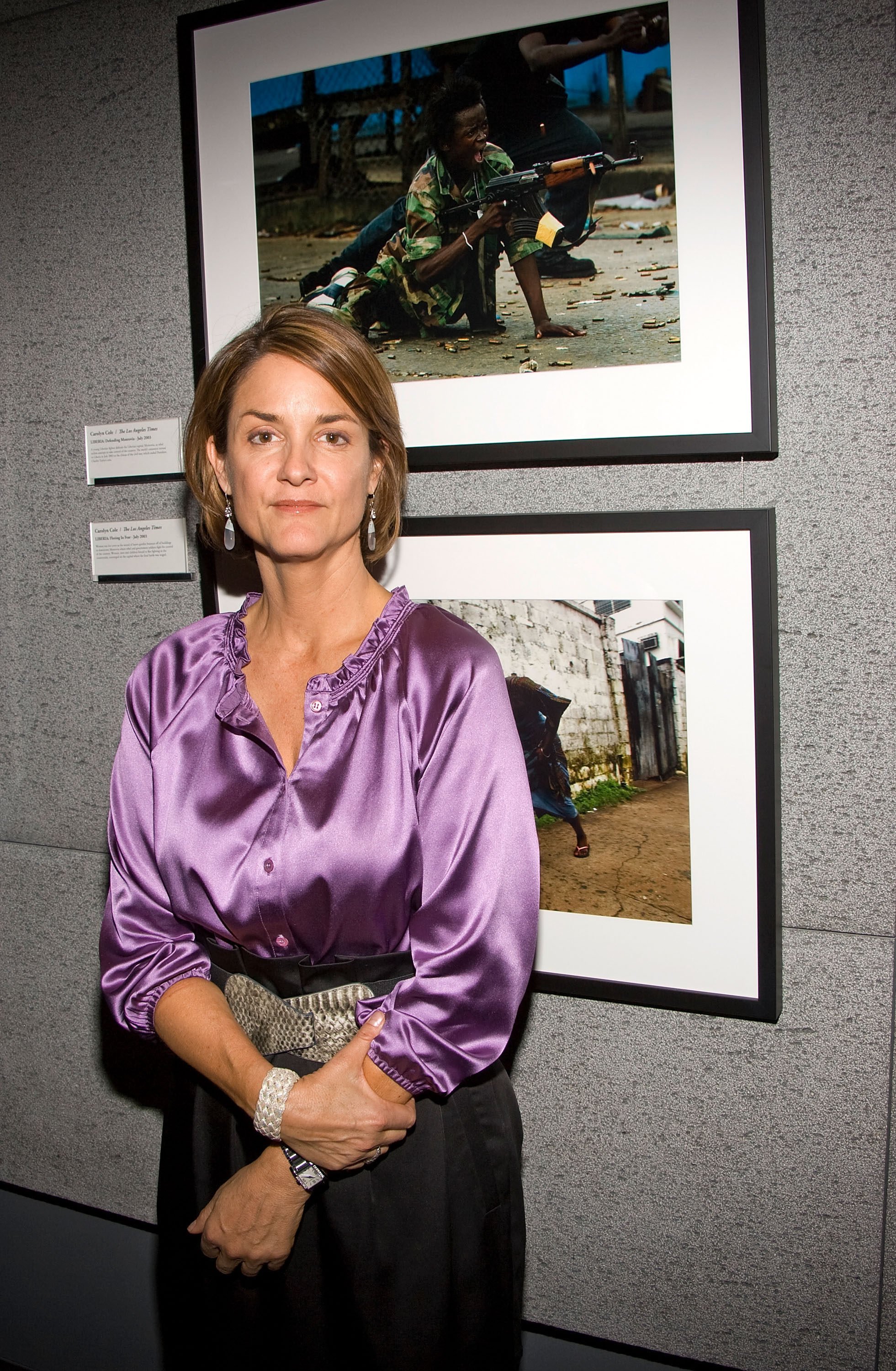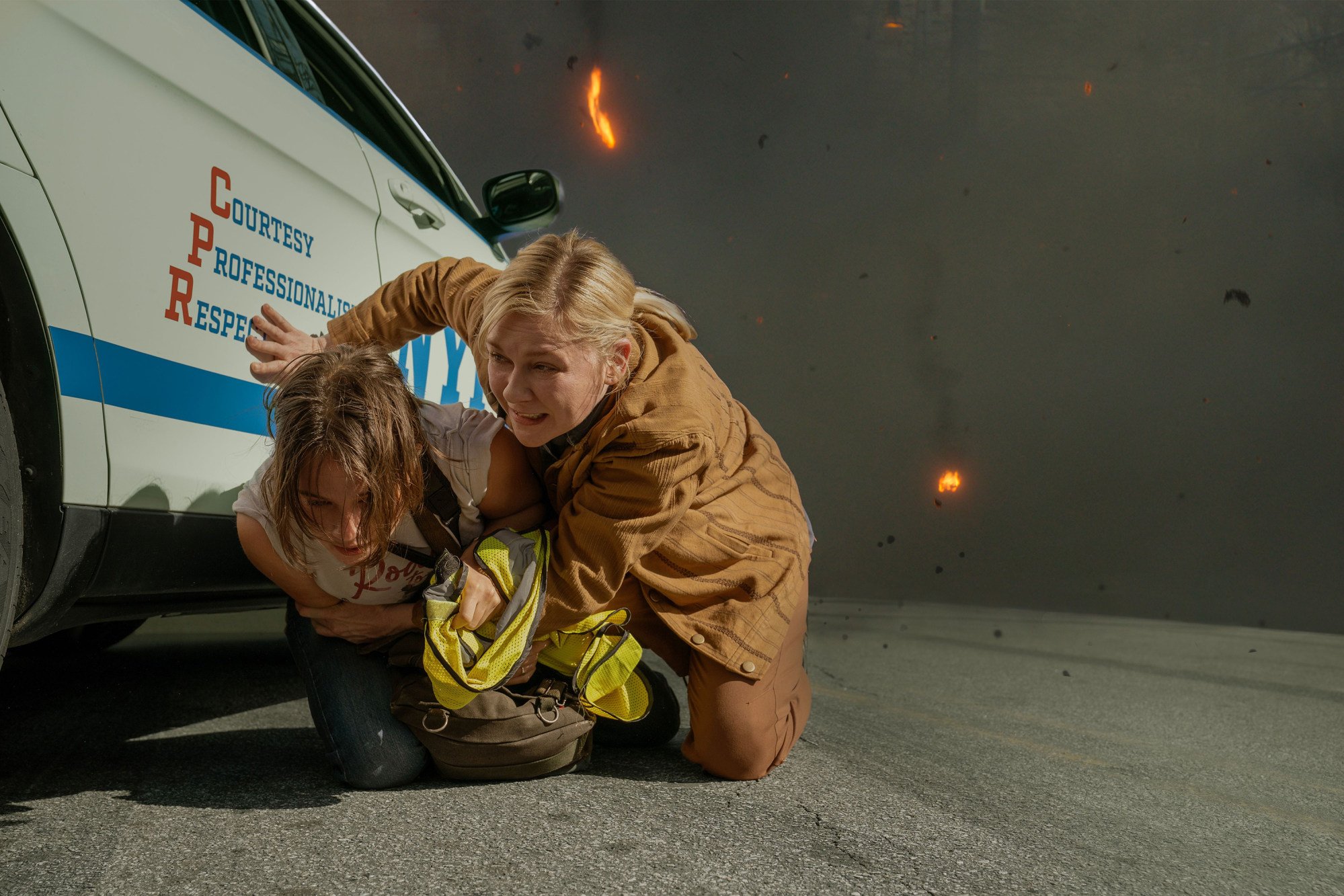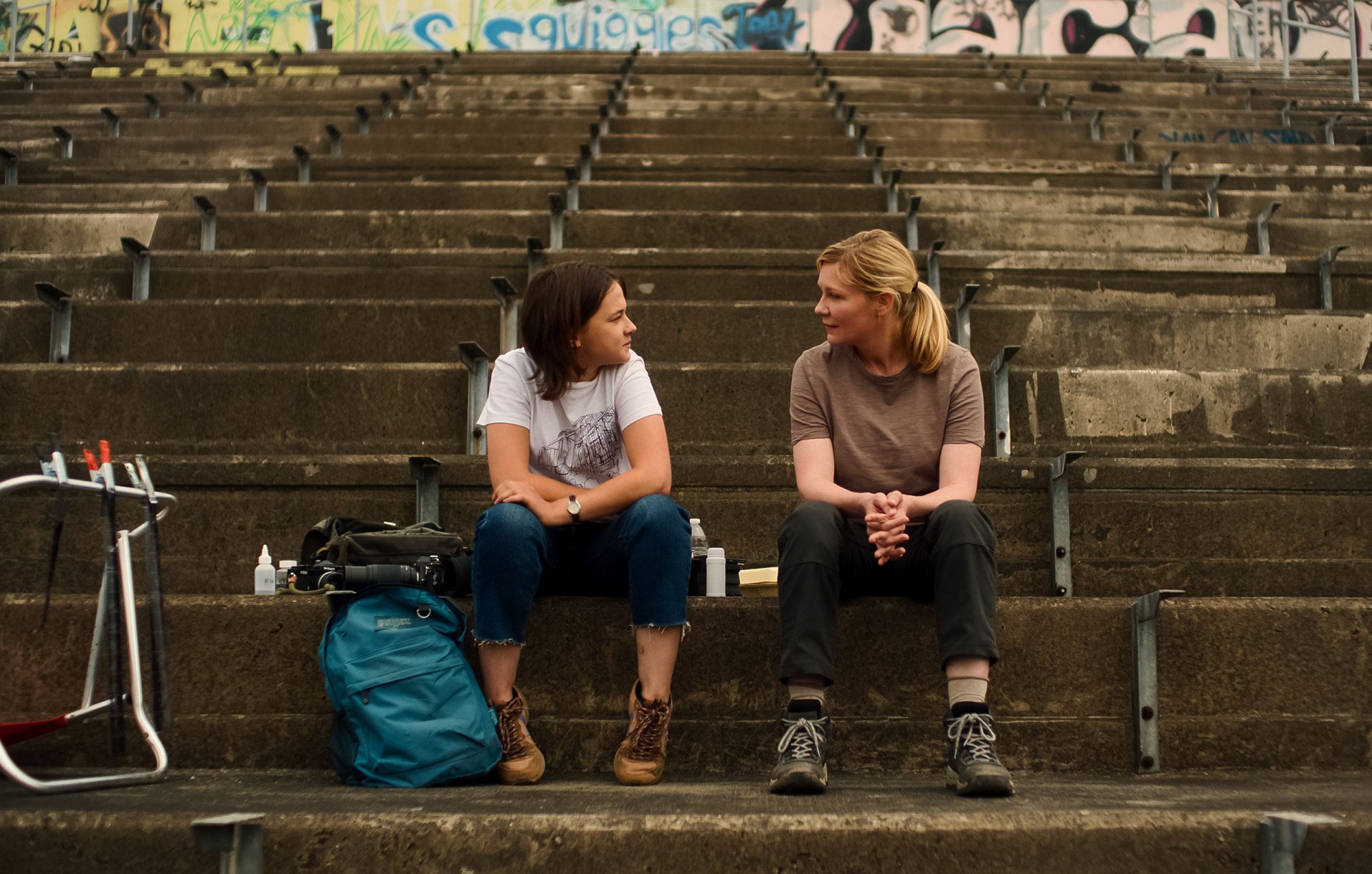
How accurate is 2024 film Civil War in its depiction of photojournalists? Pulitzer Prize winner Carolyn Cole breaks it down
- LA Times photographer Carolyn Cole considers what 2024 film Civil War gets right and wrong in journalists operating in perilous conditions
- She points out scenes where it felt particularly true to life, how realistic the dangers they face are, and why ‘in the end, it is about risk-taking’
After favourable reviews and a strong opening weekend at the box office, Alex Garland’s provocative Civil War is already poised to become one of the most talked-about films of 2024.
The filmmaker’s graphic, often terrifying, depiction of a war-torn America and a government in crisis has sparked plenty of debate among audiences and critics.
And while the story’s “what-if” premise is pure fiction, Civil War is nonetheless flavoured by a gritty realism central to its power.
Carolyn Cole, who has covered national and international news for the Los Angeles Times since 1994, has seen Civil War and agreed to answer questions about what the film gets right – and wrong – in its depiction of journalists operating in perilous conditions.
Civil War: evocative thriller about an America at war with itself
Overall, how would you rate the accuracy of Civil War speaking from the perspective of an experienced photojournalist?
As horrible as the premise of a current-day civil war may be, I thought many of the themes touched on in the movie were realistic, like the interplay between a veteran and novice photographer, and the group of journalists as they travelled together.
Although the scenarios they faced were extreme, they were plausible. Real images come to mind like that of the American soldiers hung from a bridge in Fallujah, Iraq, or the US Marine dragged through the streets of Mogadishu, Somalia.
I have photographed riots, firefights, mass graves and the aftermath of deadly bombings. Like all films, the intensity of each scene is exaggerated, but the scenarios are possible.

Were there any moments in the film that you thought clearly misrepresented the experience of photojournalists working in a conflict?
I thought Dunst did a good job playing a veteran photojournalist, especially in her calm demeanour throughout most of the movie.
However, there were several scenes where she was carrying a camera bag but did not have her camera out. Sometimes she was using a short lens when she should have been using a telephoto lens and vice versa.
Controversial Civil War movie prompts debate over US schism
There were also times when major events were happening and she was not taking any pictures. Towards the end of the film, she stops working completely, as PTSD (post-traumatic stress disorder) takes over.
There is one scene where Jessie is developing her film in the field. Although some photographers still use film, you need a darkroom to load the film into the developing cans.

Were there any moments in the film that felt particularly true to life?
There is a scene where Lee and the reporter are in disagreement over who will join them on the trip. That happens.
Journalists do team up in vehicles, partly because of costs, limited fuel or for safety. And there are many times you have to sleep in the car, which has happened to me when covering several hurricanes.
It is amazing how quickly societal norms break down in a crisis. It only takes a day or two before looting begins and people are driving the wrong way on the freeway.
Civil War director Alex Garland on why his film is ‘just reporting’
We first meet Lee at a protest in New York that turns explosive. How does her behaviour during that scene and others like it compare to your experience?
In their first encounter, Lee lectures Jessie about safety, handing her a bright yellow vest, then shields her during an explosion. Although photojournalists do not wear construction vests, it was a nice gesture.
It would be nice to think that any human being would jump in to protect a colleague in that situation, but I am not so sure.
You would expect colleagues to come to each other’s aid in times of crisis. Life and death situations can show the true character of an individual
There are multiple moments in the film when journalists are injured or threatened with injury. How realistic are those dangers, and what did you think of their colleagues’ actions in those scenes?
The Best Is Yet to Come: journalistic integrity in China under the spotlight
Over 78 journalists were killed in 2023, according to the Committee to Protect Journalists.
The bond between reporters and photographers can be very strong. Many of the photojournalists working in the field are people I have known for years. It is a fraternity of sorts. We rely on each other, even if we might work for competing organisations.
You would expect colleagues to come to each other’s aid in times of crisis. Life and death situations can show the true character of an individual. I have seen the results both positive and negative.

What did you think about Dunst’s performance portraying Lee as someone increasingly haunted by the horrors she has photographed?
Each person is affected by what they have witnessed in different ways. I have never suffered from flashbacks, nightmares or PTSD, but I know others who have.
Not only does it take its toll professionally but it can be difficult to maintain relationships in real life.
Dunst’s performance as Lee seemed realistic in that the years of covering trauma had finally caught up with her. Most likely those flashbacks would happen not in the heat of the battle but when reflecting during more quiet moments.
US$175 million opening for Chinese war film The Eight Hundred
After each conflict I covered, I went right back to covering local news. It helped me to move forward and not dwell on what I had experienced. I poured all my energy into covering each crisis to the best of my ability, knowing that was my role.
Lee’s philosophy is that her job is simply to record events and let others ask the questions about the meaning of her images. Do you have a guiding principle in the work that you do?

I think of photographs as evidence, documentation of what happened and the effect on those involved. Having a clear sense of purpose gives me the confidence to approach strangers, who seem to understand that I am there to do a job.
Photography is a universal language that almost everyone understands. It used to be that most people at home and abroad understood the role of journalists, but unfortunately, we have now become targets ourselves.
Lee and her colleagues regularly enter volatile situations quickly, without really assessing what may be going on or the dangers they may face. They seem to trust their instincts more than the spotty information available to them. What is the real-life process like for knowing where to go and under what auspices?
It is a process of collecting as much information as possible about any given situation. A road that is safe one day could be too risky the next. That is why journalists are always asking questions. It takes drive and determination to get to the front line.
In the end, it is about risk-taking. Each person has their own level of risk tolerance. It is important to travel with people you know and trust, and who you can rely on.
What is most meaningful for me is knowing that I am witnessing history and trying to make images that do justice to the people and events I am covering
What needs to be documented is often something or somewhere officials do not want you to see. Instinct is something you can acquire over time, but it is not foolproof.
I always tell young photographers to spend a few years working in the US and in places like Mexico, Central America and the Caribbean before heading to cover stories farther away.
Given what is happening in our country, we might be at the hotspot here in the near future.

In some scenes, Lee is wearing a helmet or protective gear. In most scenes, particularly the climactic battle in Washington, she is not. Is that realistic?
There were many things about the ending that were not realistic. I do not believe soldiers would have allowed journalists to be so close to the action, even helping them.
Regarding protective gear, some journalists do not wear vests and helmets because they think it gives them a false sense of security, or they cannot move as freely.
I have always worn it in conflict situations, but I have also been lucky not to have been hurt. Plenty of soldiers have been killed wearing their kit.
The Battle at Lake Changjin: China wins, US lose in Korean war epic
Jessie, the aspiring photographer, tells Lee after the horrific incident with the militant soldiers that she has never been more scared in her life but that she has never felt more alive. Is that a sentiment you can identify with?
I would not frame it that way. Certainly, living through any life-threatening event is going to be memorable. Your adrenaline is pumping and you are fully present.
It is common to hear civilians who have lived through war reflect on that being the most memorable time in their lives. That said, it is not something anyone would wish for.
When you are covering a conflict, there is nothing normal about it. Some people may be drawn to the profession for the adrenaline rush, just like some do dangerous sports.
What is most meaningful for me is knowing that I am witnessing history and trying to make images that do justice to the people and events I am covering.

